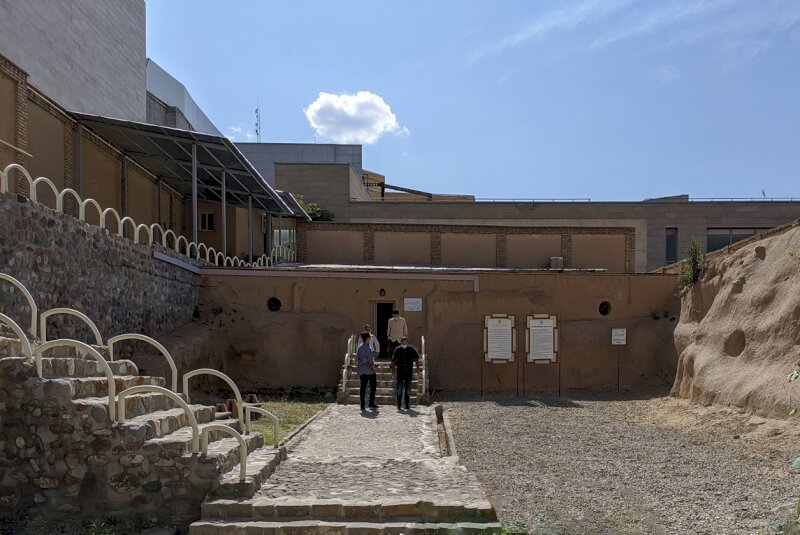Iron Age Museum in Tabriz to be equipped, organized

TEHRAN-The Iron Age Museum in Tabriz, northwestern East Azarbaijan province, is planned to be equipped and organized, provincial tourism chief has said.
Established in 2006, the museum is built over an Iron-Age cemetery and archaeological site. The burial site was uncovered in 1997 during the reconstruction of the nearby Blue Mosque.
As one of the most different museums in Tabriz, the Iron Age Museum embraces 38 ancient tombs, in which the bodies are buried as embryos, Ahmad Hamzehzadeh said on Wednesday.
“The archeological site is a cemetery belonging to the Iron Age and the first millennium BC and excavations have uncovered Iron Age tombs containing human skeletons and pottery, as well as decorative metal and bone objects,” the official added.
Iron Age is widely considered as the final technological and cultural stage in the Stone–Bronze–Iron Age sequence. The date of the full Iron Age, in which this metal, for the most part, replaced bronze in implements and weapons, varied geographically, beginning in West Asia and southeastern Europe about 1200 BC but in China not until about 600 BC, according to the Encyclopedia Britannica.
Although in West Asia iron had limited use as a scarce and precious metal as early as 3,000 BC, there is no indication that people at that time recognized its superior qualities over those of bronze.
Soaked in history and culture for millennia, Tabriz, which is the capital of East Azarbaijan, embraces several historical and religious sites, including the Jameh Mosque of Tabriz and Arg of Tabriz, and UNESCO-registered Tabriz Historic Bazaar Complex to name a few. The city became the capital of the Mongol Il-Khan Mahmud Gazan (1295–1304) and his successor. Timur (Tamerlane), a Turkic conqueror, took it in 1392. Some decades later the Kara Koyunlu Turkmen made it their capital, it was when the famous Blue Mosque was built in Tabriz.
The city retained its administrative status under the Safavid dynasty until 1548, when Shah Tahmasp I relocated his capital westward to Qazvin. During the next two centuries, Tabriz changed hands several times between Persia and the Ottoman Empire. During World War I, the city was temporarily occupied by Turkish and then Soviet troops.
ABU/AFM
Leave a Comment